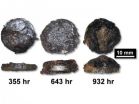(Press-News.org) Cambridge, MA. Thurs. July 31, 2014 — Extensive sequencing of DNA from thousands of individuals in Finland has unearthed scores of mutations that destroy gene function and are found at unusually high frequencies. Among these are two mutations in a gene called LPA that may reduce a person's risk of heart disease. These findings are an exciting proof-of-concept for a new "genotype first" approach to identifying rare genetic variants associated with, or protecting from, disease followed by extensive medical review of carriers. The new study by researchers from the Broad Institute, Massachusetts General Hospital (MGH), the University of Helsinki, and an international team of collaborators appears in a paper published online July 31 in PLOS Genetics.
The researchers studied exomes — the portions of the genome that correspond to protein-coding genes — from 3,000 Finns and compared them to those of 3,000 non-Finnish Europeans. They identified 83 gene-deactivating variants that were at least twice as prevalent in Finns and went on to study these variants in over 35,000 Finns. Recent examples in heart disease, HIV, type 2 diabetes and Crohn's disease have demonstrated that such mutations – known as "loss-of-function" mutations – in some cases protect from, rather than cause, disease and thereby suggest new paths toward therapeutics.
Geneticists have known that Mendelian, recessive genetic diseases –such as Tay-Sachs or cystic fibrosis that are caused by a single, mutated gene – are more common in isolated populations because of a phenomenon known as "bottlenecking." When a small population is isolated for tens to hundreds of generations, the population's genetic diversity becomes restricted, and occasional rare genetic variations can by chance become much more common. While this has long been recognized as the source of the unique rare disease patterns seen in isolated populations, this paper demonstrates that the same principles can help researchers identify rare, loss-of-function variants in genome-wide association studies on these isolated populations.
In the current study, researchers chose to study modern Finns – a population that descended from a well-documented bottleneck that occurred around 4,000 years ago. Comparing Finns with their non-Finnish European counterparts gave the researchers strong, empirical data.
The LPA gene encodes Lipoprotein(a), a type of lipoprotein, first identified in 1963 and a known risk factor for heart disease. The variants described in this paper reduced levels of LPA gene expression causing lower levels of Lipoprotein(a) in the blood. The research team examined Finnish medical records and found that the loss-of-function variants were not associated with other health problems, making blocking LPA expression a potentially exciting therapeutic approach. The availability of centralized medical records available in Finland enabled the researchers to shift the paradigm of medical genetics to a "genotype first" approach.
"This new approach could significantly change how researchers analyze rare variants for complex diseases. It gives us a window into the genetics of complex diseases that we haven't had before," said co-senior author Mark Daly, co-director of the Program in Medical and Population Genetics at the Broad Institute and chief of the Analytic and Translational Genetics Unit for the Center for Human Genetic Research at MGH. "By combining the information from detailed medical records with the information contained in the genomes of a bottlenecked population, we're uncovering rare variants that contribute to complex diseases."
Heart disease is a leading killer globally. The World Health Organization reports that cardiovascular disease was responsible for 30 percent of all global deaths, or 17.3 million people in 2008. Therapeutics able to specifically address this risk by targeting LPA could have a global impact on medical outcomes.
This work highlights the potential for using rare variant analysis in isolated populations to study complex diseases, an approach that had previously been largely limited to Mendelian traits. The approach can now be applied to other complex diseases that have many contributing genetic factors.
"We've illustrated the validity of this approach by identifying rare, loss-of-function variants with promising therapeutic potential for the treatment of heart disease, but this work also represents a reproducible approach that can be used to increase our understanding of other complex diseases as well," said co-senior author Aarno Palotie (Broad Institute, Massachusetts General Hospital, Harvard Medical School, Institute for Molecular Medicine Finland FIMM, University of Helsinki).
INFORMATION:
This work was supported by The Academy of Finland, the Institute for Molecular Medicine, Finland FIMM, University of Helsinki and the Wellcome Trust, and additional funding agencies. A complete listing can be found in the PLOS Genetics paper.
Other researchers who contributed to this work include Elaine Kim (Broad Institute, Massachusetts General Hospital), and Daniel MacArthur (Massachusetts General Hospital). Please see cited paper for a complete list of authors.
About the Broad Institute of MIT and Harvard
The Eli and Edythe L. Broad Institute of MIT and Harvard was launched in 2004 to empower this generation of creative scientists to transform medicine. The Broad Institute seeks to describe all the molecular components of life and their connections; discover the molecular basis of major human diseases; develop effective new approaches to diagnostics and therapeutics; and disseminate discoveries, tools, methods, and data openly to the entire scientific community.
Founded by MIT, Harvard, and its affiliated hospitals, and the visionary Los Angeles philanthropists Eli and Edythe L. Broad, the Broad Institute includes faculty, professional staff, and students from throughout the MIT and Harvard biomedical research communities and beyond, with collaborations spanning over a hundred private and public institutions in more than 40 countries worldwide. For further information about the Broad Institute, go to http://www.broadinstitute.org.
About Massachusetts General Hospital
Massachusetts General Hospital, founded in 1811, is the original and largest teaching hospital of Harvard Medical School. The MGH conducts the largest hospital-based research program in the United States, with an annual research budget of more than $785 million and major research centers in AIDS, cardiovascular research, cancer, computational and integrative biology, cutaneous biology, human genetics, medical imaging, neurodegenerative disorders, regenerative medicine, reproductive biology, systems biology, transplantation biology and photomedicine.
Paper cited:
Lim, E, Wurtz, P, Havulinna, A et al. Distribution and medical impact of loss-of-function variants in the Finnish founder population. PLoS Genetics, Online July 31, 2014. DOI: 10.1371/journal.pgen.1004494
Innovative 'genotype first' approach uncovers protective factor for heart disease
Broad researchers and colleagues gain genetic insights through study of Finns
2014-07-31
ELSE PRESS RELEASES FROM THIS DATE:
A mathematical theory proposed by Alan Turing in 1952 can explain the formation of fingers
2014-07-31
Alan Turing, the British mathematician (1912-1954), is famous for a number of breakthroughs, which altered the course of the 20th century. In 1936 he published a paper, which laid the foundation of computer science, providing the first formal concept of a computer algorithm. He next played a pivotal role in the Second World War, designing the machines which cracked the German military codes, enabling the Allies to defeat the Nazis in several crucial battles. And in the late 1940's he turned his attention to artificial intelligence and proposed a challenge, now called the ...
Nanostructured metal-oxide catalyst efficiently converts CO2 to methanol
2014-07-31
UPTON, NY-Scientists at the U.S. Department of Energy's (DOE) Brookhaven National Laboratory have discovered a new catalytic system for converting carbon dioxide (CO2) to methanol-a key commodity used to create a wide range of industrial chemicals and fuels. With significantly higher activity than other catalysts now in use, the new system could make it easier to get normally unreactive CO2 to participate in these reactions.
"Developing an effective catalyst for synthesizing methanol from CO2 could greatly expand the use of this abundant gas as an economical feedstock," ...
Refocusing research into high-temperature superconductors
2014-07-31
Below a specific transition temperature superconductors transmit electrical current nearly loss-free. For the best of the so-called high-temperature superconductors, this temperature lies around -180 °C – a temperature that can be achieved by cooling with liquid nitrogen.
The location of atomic nuclei and binding electrons in a material is determined by its crystal structure. However, electrons additionally have an electromagnetic angular momentum, referred to as spin. When many spins become coupled in a material, electromagnetic disturbances with a preferential orientation ...
Study finds benefits to burning Flint Hills prairie in fall and winter
2014-07-31
MANHATTAN — Kansas State University researchers have completed a 20-year study that looks at the consequences of burning Flint Hills prairie at different times of the year. It finds that burning outside of the current late spring time frame has no measurable negative consequences for the prairie and, in fact, may have multiple benefits.
The study was conducted by Gene Towne, research associate and the Konza Prairie Biological Station fire chief, and Joseph Craine, research assistant professor, both in the Division of Biology. They recently published the study, "Ecological ...
Fermi satellite detects gamma-rays from exploding novae
2014-07-31
TEMPE, Ariz. - The Universe is home to a variety of exotic objects and beautiful phenomena, some of which can generate almost inconceivable amounts of energy. ASU Regents' Professor Sumner Starrfield is part of a team that used the Large Area Telescope (LAT) onboard NASA's Fermi Gamma-ray Space Telescope satellite to discover very high energy gamma rays (the most energetic form of light) being emitted by an exploding star. The surprising discovery dispels the long-held idea that classical nova explosions are not powerful enough to produce such high-energy radiation.
In ...
NASA sees Genevieve squeezed between 3 tropical systems
2014-07-31
The resurrected Tropical Depression Genevieve appears squeezed between three other developing areas of low pressure. Satellite data from NOAA and NASA continue to show a lot of tropical activity in the Eastern and Central Pacific Oceans on July 31.
NASA/NOAA's GOES Project at the NASA Goddard Space Flight Center in Greenbelt, Maryland has been kept busy, providing visible and infrared satellite imagery of the Eastern and Central Pacific Oceans. The project uses data from NOAA's GOES-West and GOES-East satellites to create images and animations. All four systems were captured ...
CU Denver study links self-identified ethnic labels to cultural values
2014-07-31
DENVER (July 31, 2014) – A recently released study by a researcher at the University of Colorado Denver and published in the Journal of Humanistic Counseling explores why people of Latin American descent self-identify using terms like Latina/o, Hispanic, and Chicana/o. Carlos Hipolito-Delgado, an associate professor in the School of Education & Human Development at the University of Colorado Denver, found a difference between preferred ethnic labels and how a person identifies with their cultural heritage and United States values.
An expert in ethnic identity development, ...
Carnegie Mellon chemists create nanofibers using unprecedented new method
2014-07-31
PITTSBURGH—Researchers from Carnegie Mellon University have developed a novel method for creating self-assembled protein/polymer nanostructures that are reminiscent of fibers found in living cells. The work offers a promising new way to fabricate materials for drug delivery and tissue engineering applications. The findings were published in the July 28 issue of Angewandte Chemie International Edition.
"We have demonstrated that, by adding flexible linkers to protein molecules, we can form completely new types of aggregates. These aggregates can act as a structural material ...
Groundbreaking research maps cultural history
2014-07-31
New research from Northeastern University has mapped the intellectual migration network in North America and Europe over a 2,000-year span. The team of network scientists used the birth and death locations of more than 150,000 intellectuals to map their mobility patterns in order to identify the major cultural centers on the two continents over two millennia.
In the new paper, to be published Friday in the journal Science, the researchers found how locations such as Rome, London, and Paris have emerged as cultural hubs as more intellectuals died in these cities than ...
NIST corrosion lab tests suggest need for underground gas tank retrofits
2014-07-31
A hidden hazard lurks beneath many of the roughly 156,000 gas stations across the United States.
The hazard is corrosion in parts of underground gas storage tanks—corrosion that could result in failures, leaks and contamination of groundwater, a source of drinking water. In recent years, field inspectors in nine states have reported many rapidly corroding gas storage tank components such as sump pumps. These incidents are generally associated with use of gasoline-ethanol blends and the presence of bacteria, Acetobacter aceti, which convert ethanol to acetic acid, a component ...
LAST 30 PRESS RELEASES:
Manta rays create mobile ecosystems, study finds
Study: Mixed results in using lipoic acid to treat progressive multiple sclerosis
Norbert Holtkamp appointed director of Fermi National Accelerator Laboratory
New agentic AI platform accelerates advanced optics design
Biologists discover neurons use physical signals — not electricity — to stabilize communication
Researchers discover that a hormone can access the brain by hitchhiking
University of Oklahoma researcher awarded funding to pursue AI-powered material design
Exploring how the visual system recovers following injury
Support for parents with infants at pediatric check-ups leads to better reading and math skills in elementary school
Kids’ behavioral health is a growing share of family health costs
Day & night: Cancer disrupts the brain’s natural rhythm
COVID-19 vaccination significantly reduces risk to pregnant women and baby
The role of vaccination in maternal and perinatal outcomes associated with COVID-19 in pregnancy
Mayo Clinic smartwatch system helps parents shorten and defuse children's severe tantrums early
Behavioral health spending spikes to 40% of all children’s health expenditures, nearly doubling in a decade
Digital cognitive behavioral treatment for generalized anxiety disorder
Expenditures for pediatric behavioral health care over time and estimated family financial burden
Air conditioning in nursing homes and mortality during extreme heat
The Alps to lose a record number of glaciers in the next decade
What makes a good proton conductor?
New science reporting guide published for journalists in Bulgaria
New international study reveals major survival gaps among children with cancer
New science reporting guide published for journalists in Turkey
Scientists develop a smarter mRNA therapy that knows which cells to target
Neuroanatomy-informed brain–machine hybrid intelligence for robust acoustic target detection
Eight SwRI hydrogen projects funded by ENERGYWERX
The Lundquist Institute and its start-up company Vitalex Biosciences Announces Strategic Advancement of Second-Generation fungal Vaccine VXV-01 through Phase 1 Trials under $40 Million Competitive Con
Fine particles in pollution are associated with early signs of autoimmune disease
Review article | Towards a Global Ground-Based Earth Observatory (GGBEO): Leveraging existing systems and networks
Penn and UMich create world’s smallest programmable, autonomous robots
[Press-News.org] Innovative 'genotype first' approach uncovers protective factor for heart diseaseBroad researchers and colleagues gain genetic insights through study of Finns







